If you are searching for flowers that start with F before that let me tell you there are more than 19 plants that start with the letter F, they look beautiful, rare and unique. Lets now find out about What is a plant that starts with F?

Flowers That Start With F includes Fan flower, false rue anemone, fivespot, frikart’s aster, forget me not, frangipani, fern leaf yarrow, false indigo, floss flower. Some more flowers that start with letter F are French marigold, Forsythia, Feverfew, Four O’clock, Flame nettle, Fivespot, flax flower, flannel flower and foxglove. Most plants are annual and some can be termed as perennial because of their nature of growing back with minimal effort.
Sometimes just like you searching for a flower which has a similar first letter so it can be gifted to loved ones. Flowers that begin with F are beautiful and dashing looking plants, and they are easy to grow plants so don’t worry much about these plants.
Here is the list of Flowers That Start With F :
1. Fumewort (Corydalis solida)
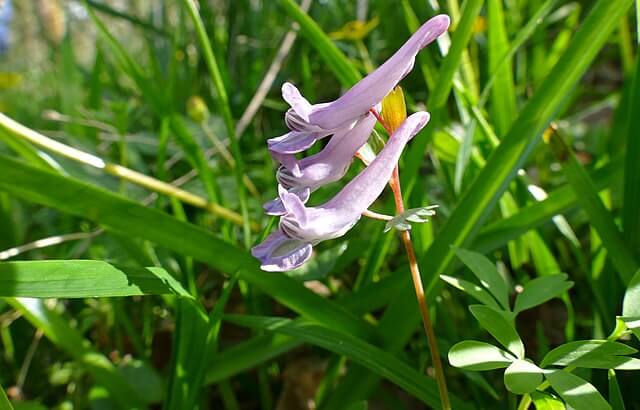
The tuberous herbaceous perennial Corydalis solida ‘Beth Evans’ (Fumewort) has spectacular spikes, which are up to 20 light cherries pink to darker pink tubular blooms with such a white flash upon that spurs.
However, these flowers are freely in the middle to late springtime, rising above attractive, fern-like leaves with blue-green, split leaves. This attractive little plant is quite suitable for growing and is ideal for borders, rockeries, and forest locations. Around 6-10 in. height and broad, it grows in bunches (15-25 cm).
There will not be any foliage or blossoms in the summertime because this plant is resting. In generally fertile, moderate to moist, well-drained soils, it grows best in warm or partial shade. Almost disease-free.
2. False Rue Anemone
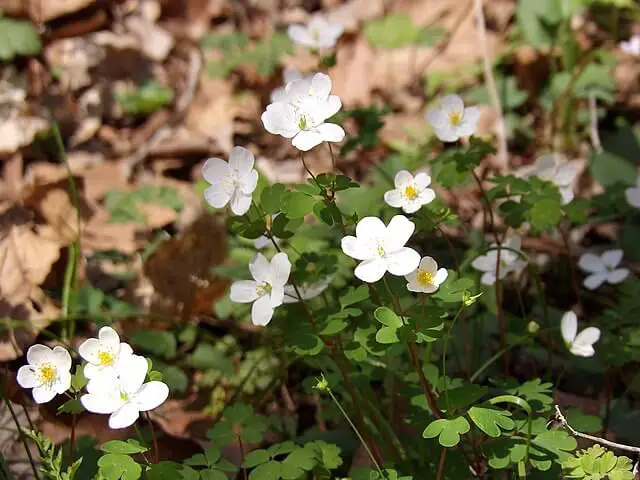
The false rue anemone is a springtime herbaceous wildflower that grows in huge colonies. Flowers grow alone from axils of the leaves on tall stalks; sepals 5, white—flowers from March until May that can grow 5 to 8 inches in height. Leaves can be found at the plant’s bottom as well as on flowering stalks. Leaves are divided into two or three portions, each with rounded lobes.
The (real) rue anemone is sometimes confused with such a flower. This species, on the other hand, seems to have only sepals (not entire leaves) on the blooming stems; it usually does have more than five sepals, some of which are pinkish; it is rarely found in groups, and it loves wooded slopes to humid bottomlands.
3. Fern Leaf Yarrow
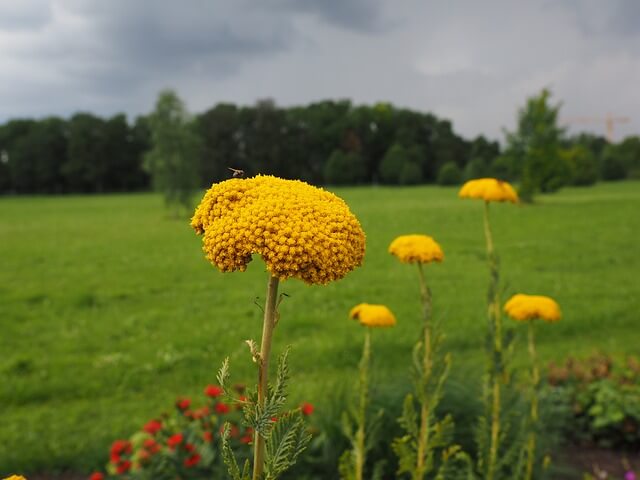
Achilleafilipendulina is a blooming herbaceous plant native to located in southwestern Asia inside the sunflower family. This fern leaf yarrow plant blooms in normal garden soils and will accept bad soils if drainage is excellent. Heavy clays and humid and fertile soils should be avoided.
However, one of the biggest yarrow kinds is the fern leaf yarrow. Whereas you can cut or dry, the long-lasting blossoms are lovely. Its dried blooms have a long life span.
The leaves of Achilleafilipendulina are greenish with such a fern-like structure and a powerful aromatic smell. Moreover, it can produce a lovely basal clump.
4. Frangipani
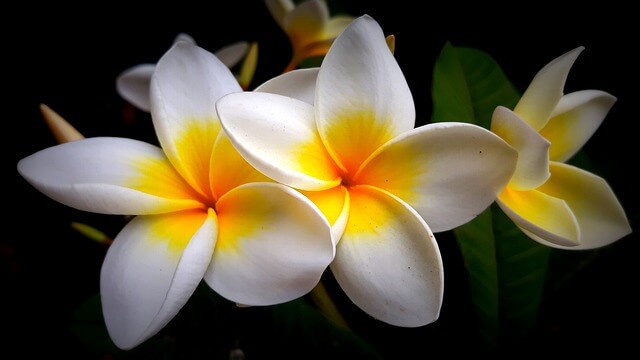
The frangipani plant is a tiny tree with such a tropical look. The fragrant blossoms come in a variety of colors, from white with something like a yellow center to brilliant pinks, yellows, pink-yellow-orange mixtures (sometimes known as “fruit salad”), and darker mahogany-red tones. Sometimes red ones are so dark that they’ll be referred to be “black.” The plant grows abroad, expanding crown as it matures, with branching usually beginning a little above ground surface.
However, it grows usually wide, about 5 to 8m with age. Plus, it needs full sun to grow and should protect from winds.
5. False Indigo

Baptisiaaustralis (false indigo) is a permanent plant that grows in the (pea) family. It grows with blue, pea-like blooms and also is known by other names such as false blue indigo or wild blue indigo. False indigo is a plant native to North America’s southern plains.
In the middle to late spring, around a month just after leaves appear, foot-long, lupine-like spikes of blue, pea-like blooms arise. Such terminal racemes have unique flowers that are roughly 1 inch long. There are white varieties as well as light to deep indigo blue varieties. Flowering seems to last only a couple of weeks. The stems can also be used as a cut flower. Once they mature in mid-summer fall, they expand to be 2-3 inches long and turn from greenish to charcoal-black.
6. Forget Me Not
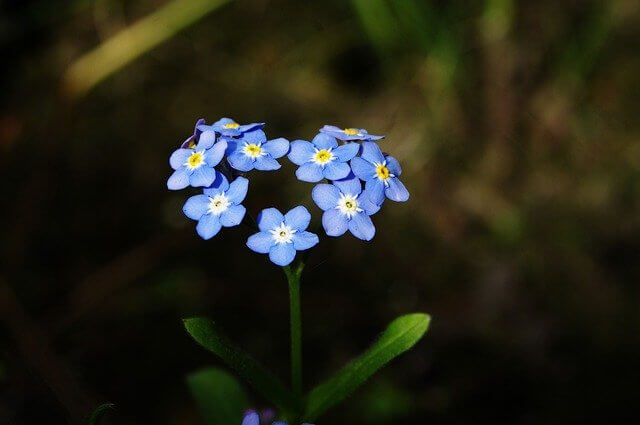
The real forget-me-not flowers (Myosotisscorpioides) have tall, hairy stems that can grow to a height of 2 feet (61 cm). Five petaled blue flowers with golden cores burst from the stalks between May and October.
The petals of some flowers are pinkish. Forget-me-not plants are frequently seen growing nearby brooks, streams, and other water bodies that provide high humidity and water required by such a species. The forget-me-not flower is a perennial that self-seeds readily, enabling more wildflowers to develop and bloom in gloomy areas where the small seeds might drop.
Like with most native wildflowers, forget-me-not bloom maintenance is modest. Forget-me-not species grow in a wet, shady environment, but they can also survive in broad light.
7. Fan Flower
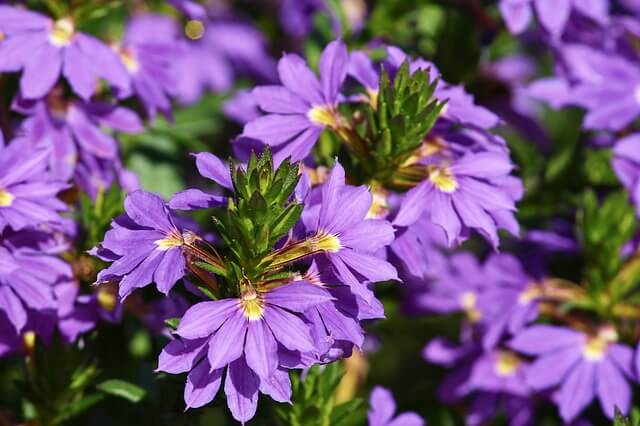
Fan Flower plants are fragile evergreen perennials in Australia that grow 8″-12″ tall & extend out to 5 feet in places where they would be safe. They have rapid growth, high temperature resistance, bug, and insect resistant. However, Fan Flowers are spreading plants with roughly cut light green leaves.
Fan Flower plants must be cultivated in full light for optimal outcomes. It can be produced in partial shade. However, the flowers may not be as abundant. Plant Fan Flowers is present in sandy loams, mildly acidic, well-drained ground treated with composting and peat moss. Water stress is good in Fan Flower plants, although they bloom better when watered routinely.
8. Fivespot
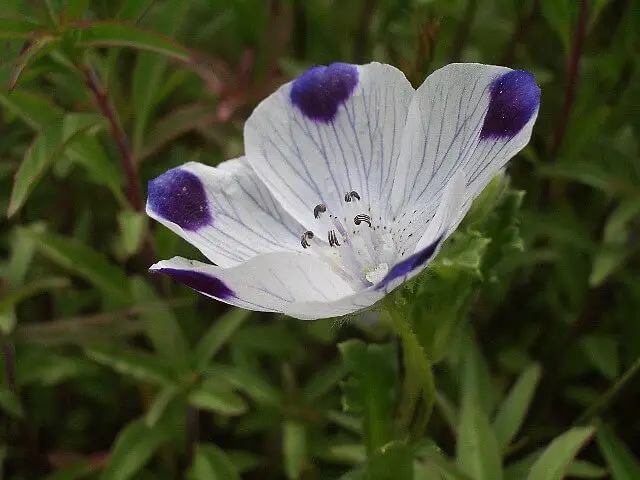
The annual wildflower five-spot can easily overgrow from seeds. It’s durable, blooms which freely and constantly during the growing period, and afterward drops back in the autumn. It contains one-inch, 5-petaled white flowers with bright purple spots at the tips of every petal – thus the name – and low-growing springtime green leaves (4-6 inches).
Five-spot wildflower plants are still flowering plants inside the Boraginaceae family that seem to be native to California.
Five-spot is easy to handle and will develop in nearly any soil. However, it likes mild weather, so plant your wildflower seeds in the shadow if you live in an urban environment.
9. Four O’clock
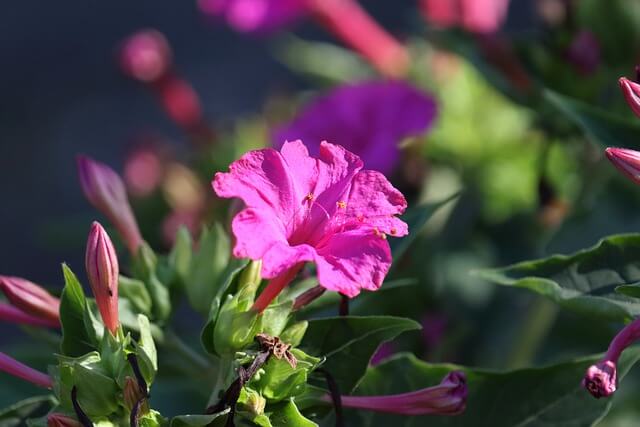
Four o’clock flowers developed in the Rockies Mountains of South America. The Latin word Mirabilis means “wonderful,” which accurately defines the resistant four o’clock plant. The most extensive production of four o’clock flowers produces four o’clock in poor to ordinary soil. The flower comes in various colors and shapes, especially several that are unique to the United States. The plant was grown by Native Americans for its medicinal benefits.
In the yard or a naturalistic environment, four o’clocks are simple to grow. Seeds or root divisions are used to grow four o’clock flowers. Take four o’clock’s hard, black seeds to sow in other places once they’ve been planted. Four o’clocks bloom in direct sunlight to partial sun and are ideally planted in which the powerful aroma can be felt—soaking or pinching the seeds before planting is beneficial.
10. Frikart’s Aster

Asters are the show-stoppers in the autumn garden. These lovely daisy-shaped white, pinkish, blues, purple, or red flowers grow in the garden whenever there isn’t much else blooming.
And they’re one of the newest honey plants attracting honey bees; asters are significant plants in gardening, wildflowers fields, and highway plantings. For such a purpose, flowers have to be a constant in either pollinator landscape.
Due to the type and species, asters can grow to be 1 to six feet tall & 1 to 4 feet broad. The plants have daisy-like blooms and thus are tall and thick with hairy or silky leaves.
11. Feverfew
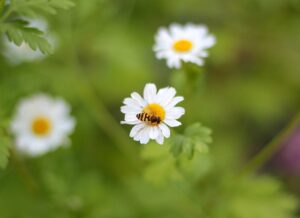
Tanacetumparthenium (feverfew) is a plant that is unique to Asia Minor and also the Balkans. Feverfew is often used in medication as fresh or dried solutions.
Feverfew is a plant native to southern Europe that has flourished in Europe, North America, and Australia. Feverfew is a small perennial with a powerful and unpleasant odor that blooms from July to October. Its yellow-green leaves are alternating and curve downwards with short hairs. The yellow flowers resemble daisy-like and clustered in a thick flat-topped bunch.
Feverfew leaves contain a wide variety of chemicals, including one being parthenolide. Parthenolide and other compounds found in feverfew have relieving migraine headaches.
Feverfew is also used to treat itching, tension headaches, and various other ailments. However, there is no medical proof to back up these statements.
12. Flannel Flower
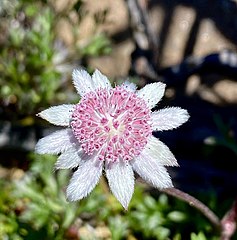
Flannel Flowers, or Actinotushelianthi, are narrow plants that require excellent drainage. Because of their weak stems, plants need to be protected from heavy winds to prevent branch breaking. They are heavy eaters that take a lot of fertilizer to stay healthy. They also react well enough to tip trimming after the planting period.
Older leaves along lower stalks will eventually turn yellow and die off, and they will also remain connected to the plant. During the wintertime of every year, they might be eliminated for aesthetic purposes.
Flannel Flowers can also be cultivated in direct sunlight or partial shade, and then once planted, they can survive the light cold.
13. Fire Pink
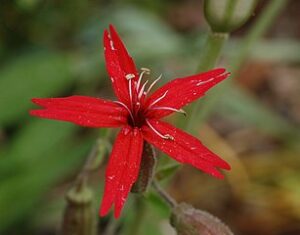
Fire Pink is a shallow herbaceous perennial bloom that is widely present in North America. Silenevirginica is the scientific name for this plant, which grows 6′′-24′′ tall in full sun and well-draining soil. It’s lovely dark red flowers grow for around six weeks in the spring and are ideal for bringing hummingbirds.
Scarlet Catchfly has been one of Fire Pink’s popular names, and it refers to the sticky and thin hairs which cover its stem that can attract insects. The adaptive feature is considered to have evolved to prevent ants from getting the nectar in the blossoms.
14. Fairy Duster

Fairy Duster is a water shortage plant that will bring a burst of exotic color to your environment. It’s ideal for desert planting.
CalliandraEriophylla often called as Fairy Duster, is a low-growing evergreen plant that is resistant to drought & easy to maintain. This plant grows in the sun and heat, making it an excellent choice for desert region gardens. Fairy Duster, on the other hand, does not grow in the shade or half shade.
The Fairy Duster enjoys brightly lit places. It’s no wonder that it enjoys full sun and reflecting heat, given that it’s a desert native.
15. Forsythia
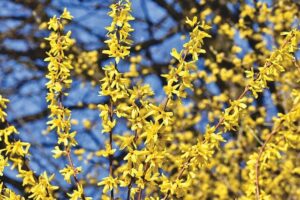
With their brilliant yellow blooms, forsythia plants are one of the harbingers of springtime, having lovely dull regions of the environment. Try to grow forsythias, as well as advice and tips on how to maintain forsythia bushes after they’ve been planted, such as trimming and managing with significant problems.
Forsythia shrubs prefer well-draining soil and are best watered on a regular basis. At least 2 inches (5 cm) of watering should be given to forsythias once a week. If there isn’t enough rain to produce this quantity of water, then we can use water from the tap to make up the difference. Forsythia plants, on the other hand, may survive periods of less water if you’re sensitive to water saving.
16. Flame Nettle
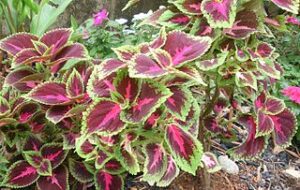
Flame nettle (Coleus plants) are partially planted with slow growth and thick leaves. However, it is usually planted as a half-hardy yearly in the garden. They have stunning multicolored leaves that come in various colors from black to orange to gold to pink to red. They grow to be from 30 and 90 cm tall. Painted nettle and Flame nettle are two popular names for Coleus.
Coleus is a great border plant for mixed pots, window boxes, and outdoor planters, especially when combined with other annual crops or perennials. It may also be utilized in bulk plantings & makes an excellent complement to borders.
17. Foxglove

Gardeners have a process that improves tall and majestic foxglove plants (Digitalis purpurea) in situations wherein vertical interest and beautiful flowers are required. Depending on the kind, foxglove blossoms can grow up to 6 feet (2 meters) tall. Foxglove flowers come in a variety of colors, including white, lavender, yellow, pink, red, and purple tubular blooms. Based on the heat of the summer, foxgloves flourish in full sun, medium shade, or full shade. They are adaptable in gardening areas 4 to 10, and in hotter climates, they benefit from additional noon and evening shade. The plant requires more shade as the summers become hotter.
18. Flax Flower
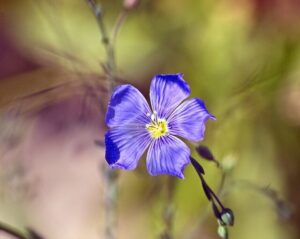
Blue flax flower is a wildflower native to California that may be grown successfully in other areas with a 70% positive outcome. The flax flower, a cup-shaped yearly that can also be perennial, blooms from May to September, generating numerous flowers which only last for a day. Flax can grow to a height of 2 feet (1 m.) and more when fully grown. In some regions, the normal flax plant, Linumusitatissimum, can be produced as a commercial crop. Flax is produced for its oil, linseed oil, which is used as a protein supplement for livestock. Many commercial flax producers use legumes as flax flower partners.
19. Floss Flower
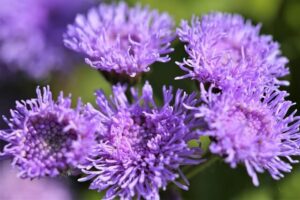
Ageratum Flowers, commonly termed as Floss Flower, are available in a variety of colors, including blue, pink, and white flowers. The longer flower kinds are better for trimming and exhibiting in your home, whereas the smaller bedding flower types are usually kept in the field.
Ageratum Flowers prefer A proper Sun / Partial Shade, with a well-drained ground as their sun demands. It works in zones ranging from 5 to 9. It grows to be between 0.5 and 2 feet in height & flowers from mid-summer to mid-fall. It would have the advantage of becoming suitable for flowers.
20. French Marigold
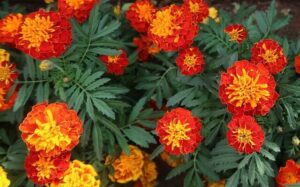
These french marigolds are tiny and bushy, with blossoms up to 2 inches in length. They are available in a variety of colors, including yellow, orange, and burgundy red. The lengths vary between 6 and 18 inches (15 to 46 cm.). From springtime to winter, these lovely blooms will bloom.
You may produce French marigolds via seed or buy them as bedding plants. When it comes to planting French marigolds, there are some things to consider, just as there are in many bedding flowers. Full light and well-drained soils are required for these plants. They also grow in containers, and maybe a few pots of marigolds placed over your lawn can give a splash of color.
21. Firecracker Flower

Firecracker flower is a flower that starts with letter F is native to the United States and it is a beautiful flowering plant. Scientific name of this plant is Dichelostemma ida-maia
& it belongs to Asparagaceae. These are grown because they are used in various arrangements for decorative purposes. You can find these in mountains, coastal areas and woodlands. It has over 19-20 flowers in a single stem and they are one of the best perennial flowers which thrives over the years.
22. Freesia
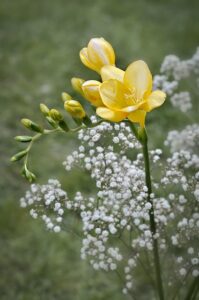
Freesia is a perennial plant which are 4-16 inches grown and can spread upto 4-12 inches. These plants belong to the South African region particularly in kenya and cape provinces. The scientific name of freesia is Freesia refracta & it is a member of the Iridaceae family. The plant looks like a funnel in shape and it has its own fragrance.
23. French marigold(Tagetes patula)

French marigold is a flowering plant with a height of 1.6 feet(19.2 inches) tall and 1 feet(12 inches) wide. They are very good at blooming and that is why it is cultivated for the ornamental arrangements. You can expect the french marigold to blossom in the month of july to oct generally until the frost comes. The scientific name of this plant is Tagetes patula and it belongs to Asteraceae. Generally they can be found in Golden and yellow color. Even it has commercial use in essential oil making.
24. Fan columbine
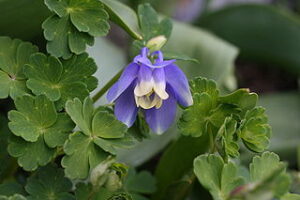
These plants are perennial plants with 0.75 feet (4-8 inches) height & are hardy to zone 3 to 9. They belong to the Ranunculaceae family & the scientific name of this flower is aquilegia flabellata. They generally grow in moist soil with good draining support on pots. You can see the white flowers bloom in the months of April to may.
25. Feathery Cassia
It is an evergreen shrub that flowers in green and yellow color. It can reach up to 4-6 feet tall and width would be similar to height like 4-6 feet. It can attract butterflies, bees and can be placed in residential areas, open parks, and business gardeners. You can expect this to bloom in spring to fall. It is native to Australia and the plant belongs to the Fabaceae family. The scientific name of this plant is Senna artemisioides.
26. Ferocactus Schwarzii
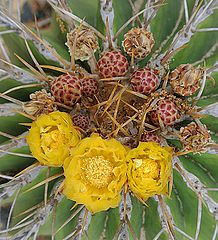
It is a type of cactus that produces flowers. The ferocactus schwarzii is 30 inch taller and can be thick for about 20 inches. It looks more exciting when the yellow flower starts to grow at the top of this ferocactus. It prefers full sun & does not water it more than it needs otherwise it will die off. They are propagated after the flower wither to produce seeds. These plants grow in USDA zone 9a to 11 b. They can tolerate above 20-30 degree F temperature.
27. Ficus Carica
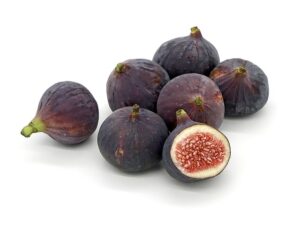
This plant belongs to Moraceae and it is a shrub or tree based plant. Ficus carica can grow in full sun to partial light and they mostly like to sit in moist soil, not soggy. The ficus carica belongs to Asian region and it can also be grown in container pots.
28. Filbert Shrub (Corylus)

It is commonly known as american filbert, it is a round shaped shrub plant. It is hardy to zone 4 to 9 and they mostly prefer areas which have full sunlight. The size of the plant is 16-18 inches tall and can spread up to 12 inches. The scientific name of the filbert shrub is Corylus americana.
29. Firethorn
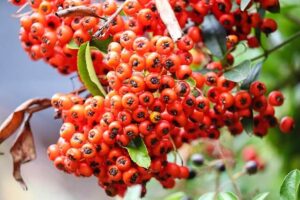
The firethorn is famous for its foliage color; it is a type of shrub that comes from the rosaceae family. The scientific name of firethorn is pyracantha & It can grow up to 12-13 feet(approx 4 meters). They prefer sunlight that comes directly to the plant but can tolerate partial light location as well. You can expect the blossom in the months of May to july. It is also easy to propagate it using the cuttings.
30. Fishhook Cactus
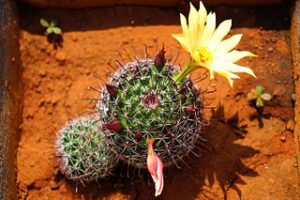
Also known by the name globe cactus, pincushion cactus and birthday cake cactus as it looks just like a creamy round shape cake. The scientific name of this plant is Mammillaria Schiedeana & they belong to Mexico but the plant has its cultivation in South west USA, Venezuela and many more. It is a member of the Cactaceae family. This cactus plant is small in size generally they can be 5-40 cm tall and 5-20cm thick.
31. Flowering tobacco

The scientific name of Flowering tobacco is Nicotiana tabacum, it belongs to the Solanaceae family. The height of the plant goes from 5-10 feet. It is native to subtropical America and they can be grown with minimal care if you want to try to grow them.
32. Foothill penstemon

This plant is a perennial herb which is also known by the name foothill beardtongue and bunch leaf penstemon. It is used all over the world for the purpose of various flowering arrangements. They can easily attracts butterflies and birds because foothill penstemon has its own nectar which the flies very much likes.
Wrap Up
I hope you get the answer on “Flowers That Start With F” and if you like to read more article check below:
Pitcher Plant Care – Indoor Growing Guide(Soil, Water, Temp)
